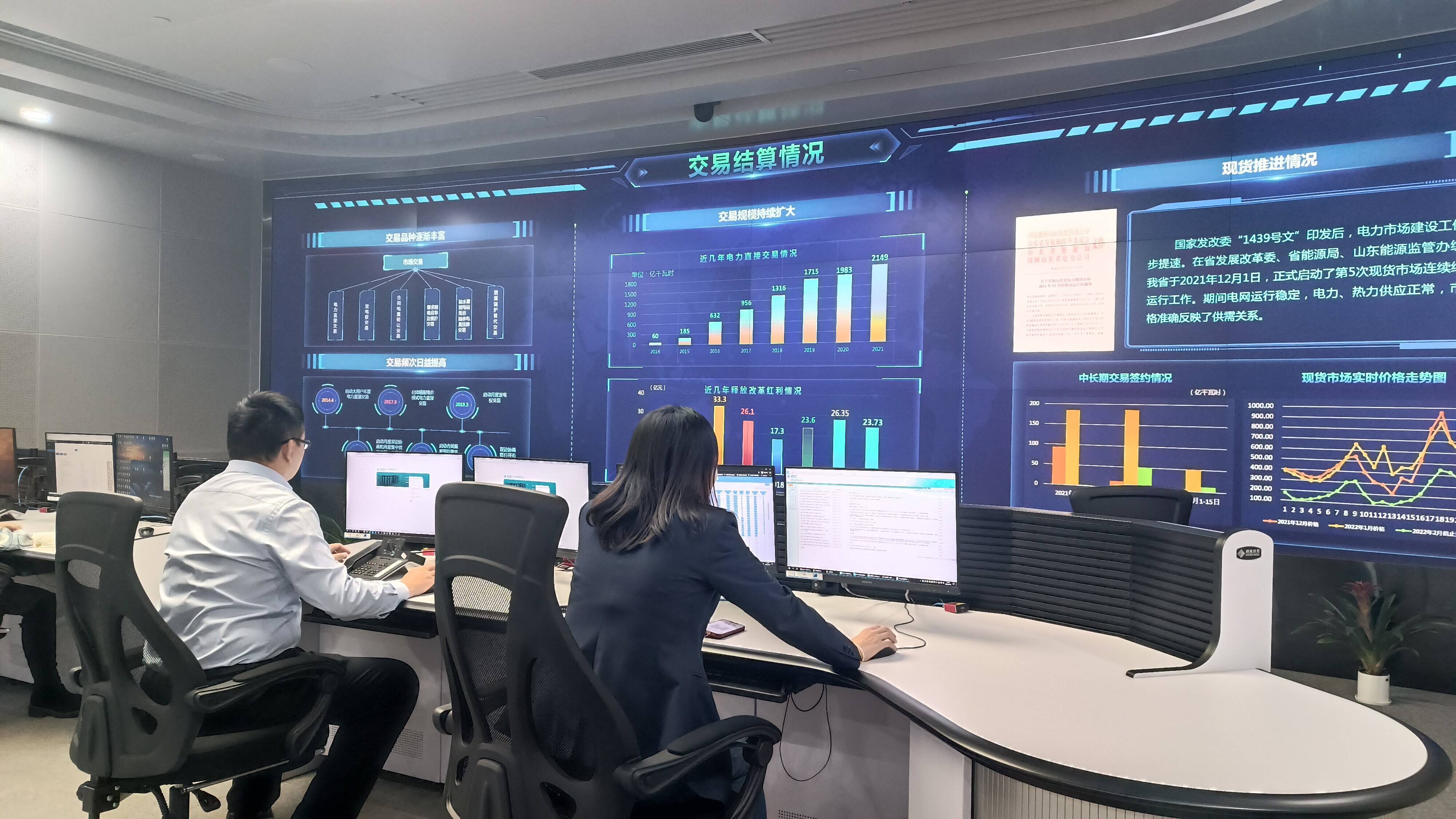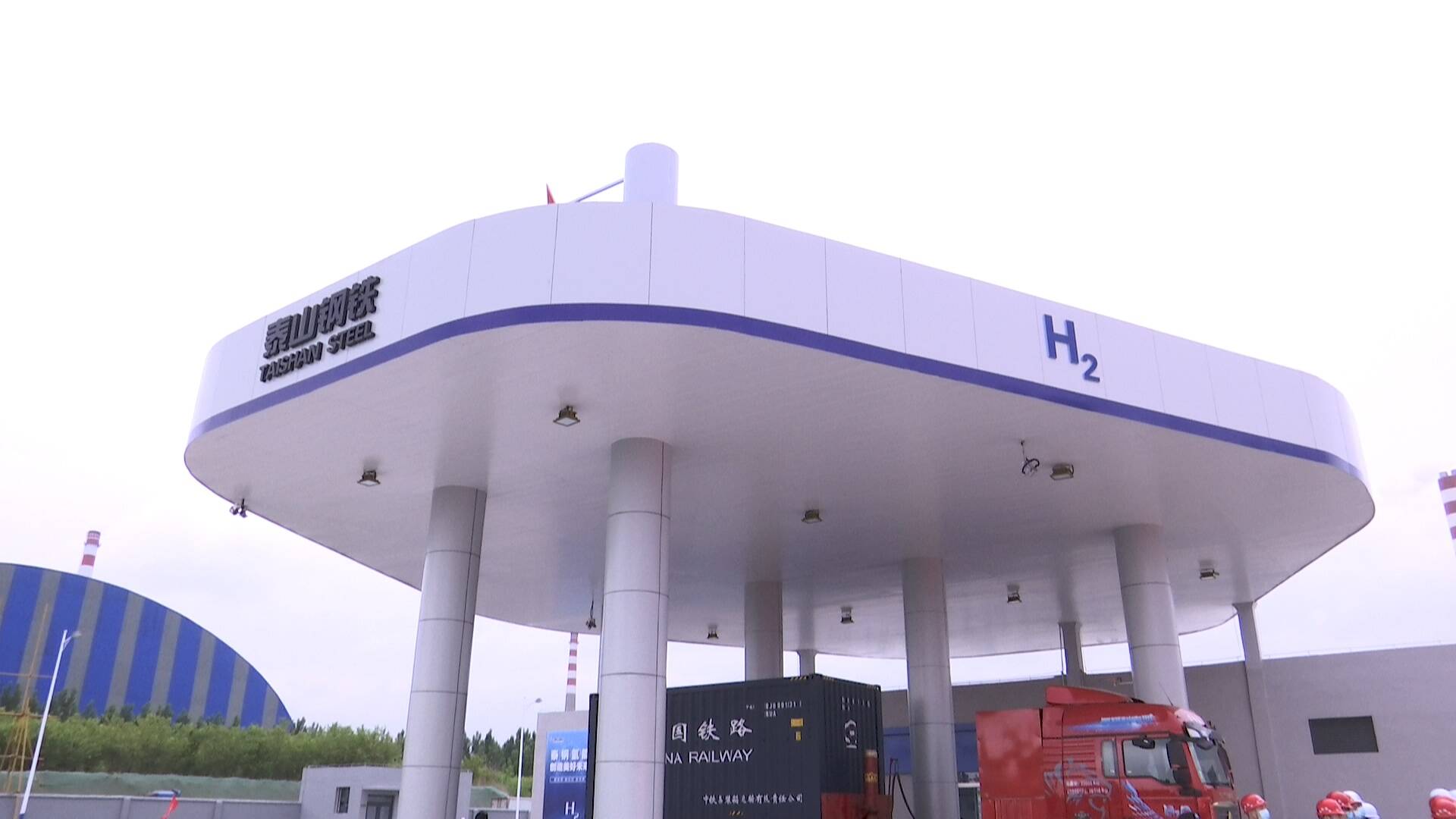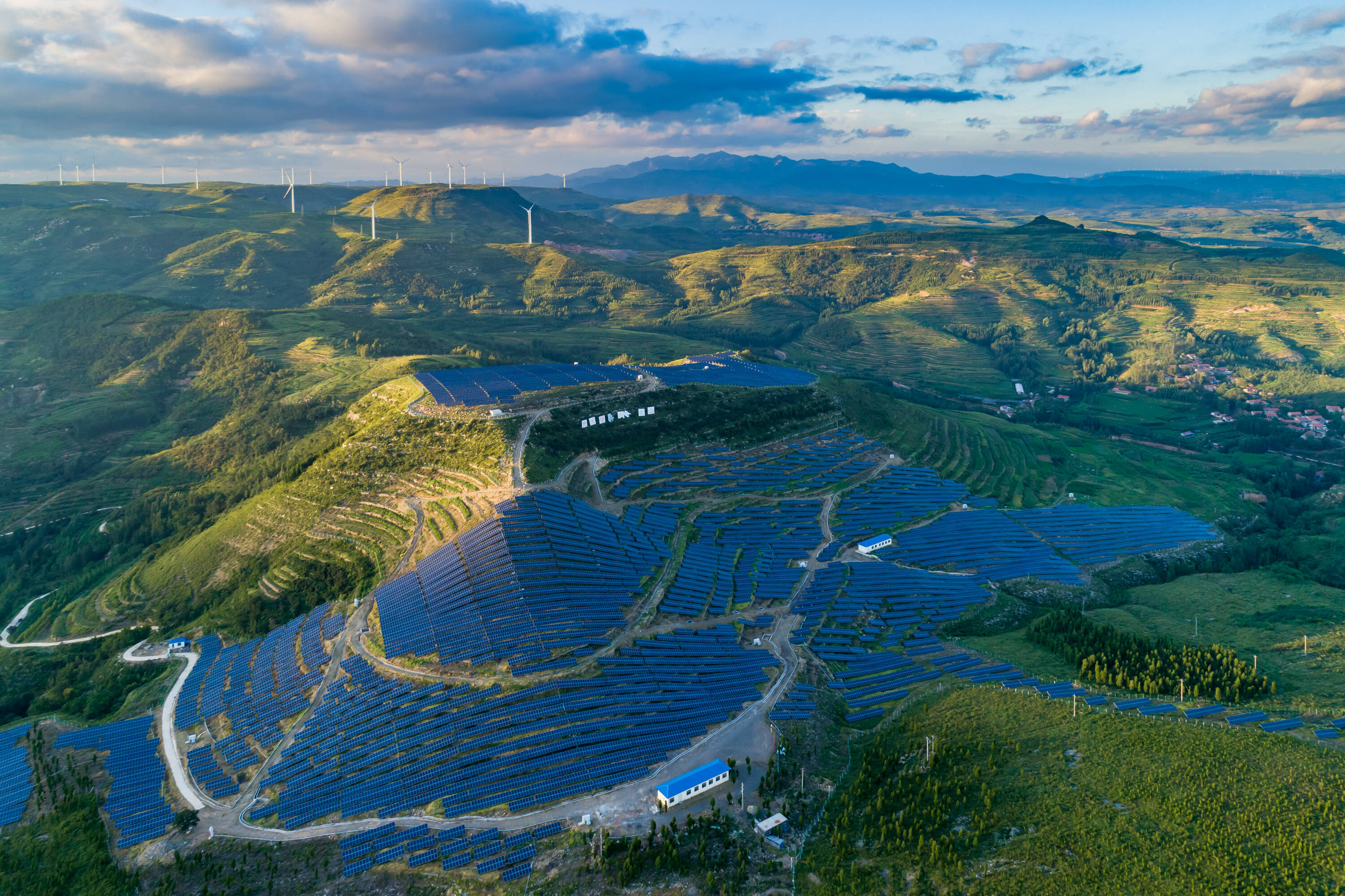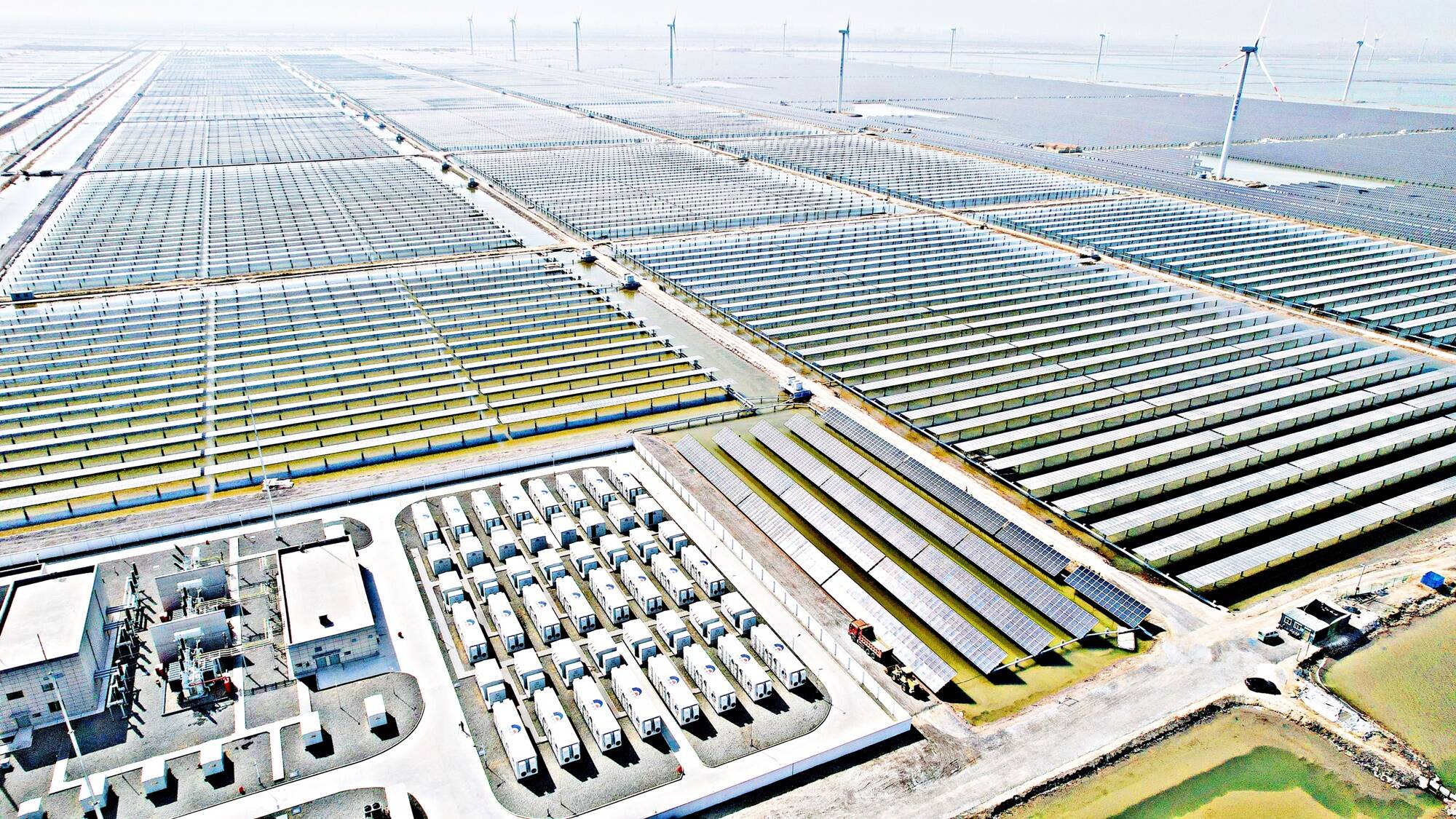
From the “negative tariffs” to observe the arrangement of renewable energy in the significant Shandong project
May 16th marked a continuous five-hour-80 yuan/MWh price drop in the Shandong power spot market between 9:00 and 14:00. This followed the appearance of real-time negative tariffs lasting up to 21 hours during this year’s “May Day” holiday in Shandong. It is the second time this year that green power spot trading prices have fluctuated significantly. In comparison to the “May Day negative tariffs”, this time, there was no decline in industrial electricity consumption during weekdays.
This resulted in increased power generation and a positive cash flow. This situation poses a challenge for the photovoltaic industry. Consumers are currently penalised for generating excess power by receiving only 8 cents per unit. Shandong’s new energy sector is also struggling to keep up as photovoltaic power generation exceeds demand. Power experts have analysed the situation, citing China’s policy of prioritising the consumption of new energy. They recommend adjusting photovoltaic power generation to meet the actual demands. In this instance, the negative electricity price arises due to a surplus of supply in the electricity spot market.

In simple terms, it means that the electricity available for purchase is more than the demand for it. This phenomenon has been observed frequently within the country and is even more prevalent within developed nations where renewable energy generation constitutes a significant proportion. European Power Exchange data shows that Germany’s electricity prices dropped below zero more than 100 times back in 2017. Currently, the electricity market rules in France, Austria, Switzerland, Belgium, and the Netherlands permit negative electricity prices.
The relationship between negative tariffs and energy composition has become clearer. Negative tariffs are not uncommon in Shandong’s new power system, which is based on new energy, and is an indication of the current rapid rise in the proportion of renewable energy in the power structure. As of the end of April 2023, data indicates that Shandong's wind power generation installed capacity is 70.433 million kilowatts, representing 35.96% of the province’s total installed power generation. The photovoltaic power generation installed capacity is 46.8365 million kilowatts, ranking first in the country for seven consecutive years. The installed capacity of new energy sources continues to rise, and therefore, its share of power generation in the electricity spot market will also increase. Endless rows of wind turbines spinning in the breeze and a field of photovoltaic panels soaking up the sun will transform the abundant wind and solar resources on site into high-quality “green energy” for economic and social development.

The implementation of a new energy system will drive green progress and facilitate the necessary fulfilment of the “double carbon” goal. Shandong, a significant energy and economic province in China, is at the forefront of this change. Ignoring the price figures, the simultaneous emergence of negative electricity prices highlights the increasing production and use of green energy in Shandong. This plays a vital role in supporting the energy needs of economic and social development as well as the general population’s production and daily life.
Green energy development not only enhances the environment but also boosts profitability
In recent years, Shandong has steadfastly promoted the green and low-carbon development of energy, with a focus on developing green energy and power conversion. Currently, the wind power industry is flourishing and serves as a microcosm of Shandong's commitment to the development and use of clean energy.
The layout of wind power generation in Shandong is coupled with a focus on nuclear energy, hydrogen energy, energy storage, and other key areas of industrial innovation. This is in line with the cultivation of new forms and modes of green and low-carbon development concepts for the energy structure, aiming for “decompression and reduction of load.” A higher quality, better efficiency, better structure, the road of economic development along with Shandong’s new energy industry, “riding the wind”.
----An industrial project and sustainability go hand in hand. Taishan Iron and Steel Group’s hydrogen refuelling mother station is the largest in Shandong Province and sources its gas from the nearby Taishan Iron and Steel Plant, located 300 metres away. Previously considered industrial waste gas, coke oven gas has now been converted into a green energy source through equipment modifications. This hydrogen refuelling mother station can supply 750 tonnes of hydrogen per year, and is able to meet the hydrogen refuelling demand within the surrounding 150km.

----A road of rural revitalisation is lit up by “green energy”. The photovoltaic power base, constructed on the barren hills of Mashuyu Village, Zhuge Town, Yishui County, Linyi City, has generated an annual output of 11 megawatts since its connection to the grid, yielding nearly £1 million annually. Notably, this has not only provided the local community with a steady income stream through “sunshine passbooks” but has also augmented the ongoing countryside revitalisation project.

----An innovative move into the green wisdom. The first city in the country to use nuclear energy for "zero carbon" heating has been established in Haiyang. The science and technology demonstration project at Haiyang nuclear power uses the same production and delivery methods for both water and heat, and relies on the comprehensive use of nuclear energy known as “Shandong wisdom”. The establishment of the “Shandong programme” has garnered attention and recognition at a national level.

Amidst the backdrop of the “dual-carbon” strategy, new energy is transitioning from a supplementary force to a primary one, adding weight and vitality to Shandong's pursuit of high-quality development. This transformation of natural resources, from gas to gold and light to golden opportunities, is also evident in the creative utilisation of industrial waste heat. Multiple datasets further support these points.
The capacity of energy supply security in Shandong has been improved significantly. Specifically, the total power installed rose from 73.146 million kilowatts in 2012 to around 178 million kilowatts in 2022. Moreover, the supply of natural gas increased from 6.3 billion cubic metres to 23.2 billion cubic metres during the same period, a respective increase of 2.3 and 3.6 times from 2012.

The pace of the energy structure transformation in Shandong has accelerated. Installed renewable energy power generation capacity has risen from 4.965 million kilowatts in 2012 to 63.87 million kilowatts in 2022, representing 35.9% of the total installed power capacity. This increase marks a rise of 29.1 percentage points.
Furthermore, there has been a strengthening of the Shandong energy science and technology innovation capacity. The province aims to establish the nation's premier demonstration project for carbon capture and storage, with a capacity of one million tonnes, whilst also creating a national demonstration zone for Shengli Jiyang shale oil. The region has over 70 major wind power manufacturing and supporting businesses, promoting the growth of key wind power equipment manufacturers like CSR Wind Power, Jinlei Technology, and Tongyu Heavy Industry. The province hosts over 120 key enterprises in the hydrogen industry chain, making it one of the most comprehensive provinces for hydrogen supply chains in the country. The province has amassed over 120 vital enterprises in the hydrogen energy sector, establishing itself as one of the most comprehensive provinces in China.
Shandong is an action-oriented province that is actively transitioning its industrial structure to the "new" economy and its energy structure to the “green” alternative. With an abundance of energy resources, Shandong is implementing good policy to solidly promote the scale development of new and renewable energy, putting them on the “fast lane” towards high-quality green growth.
New energy sources to become a multiplier for green, low-carbon and high-quality development
Shandong is a significant industrial hub in China and a crucial center for economic advancement in the northern region, characterized by a high concentration of heavy industries and reliance on coal-based energy. Its energy consumption is amongst the highest in the nation. To adopt a low-carbon, high-quality development trajectory, the region needs to revolutionize its historical practices of excessive resource and energy consumption, carbon emissions, and high pollution from crude production modes. The development of a new energy system aims to promote green transformation initiatives and the modernisation of “Shandong practice”. This new system will serve as a catalyst for the promotion of Chinese-style modernisation, with the potential to initiate positive change. By comprehensively addressing the relationship between development and carbon reduction, establishing a clean, low-carbon, safe, and efficient energy system from the top, selecting core breakthrough points, developing an energy technology roadmap, and continuously improving policy mechanisms to promote energy science and technology innovation, it is possible to accelerate the creation of an industrial structural, production mode, lifestyle, and spatial pattern that protects and conserves resources and the environment.
Returning to the opening of this article, the electricity spot market has experienced a phenomenon of negative tariffs in local areas due to the increased integration of renewable energy into the grid. This has caused issues with consumption and highlighted the fact that the existing power system is struggling to adapt to the changing demands of the industry. It is clear that this is not a standard occurrence in the energy sector, and certainly does not represent the future of the industry. To address this issue, it is essential to hasten the transition towards energy consumption transformation, encompassing energy structure, systems, forms, and spatial arrangements, to establish a contemporary energy system that is sustainable, secure, efficient, and environmentally friendly. In order to achieve this, it is crucial to consider both flexible and inflexible strategies in implementing the plan. At a “soft” level, the demand response mechanism in the system should be improved through various transaction mode synergies. This will help to balance the smooth supply of electricity and new energy with the inherent volatility of spot market transactions. Furthermore, efforts should be made to cultivate demand-side management techniques to further optimize the demand side of energy consumption. To cultivate awareness of “green power” among consumers, more effort needs to be put towards developing energy storage, building new energy supply and consumption systems, enhancing the emergency response capacity of the power grid, and improving the efficiency of comprehensive energy usage on the demand side. This will ensure healthy and stable development of the power market.
Conforming to nature and protecting the ecology is a promising direction for future development. Shandong's blueprint aims to promote “green kinetic energy” with greater strength, while in-depth advancement of the energy revolution creates a model for green, low-carbon, and high-quality development.
闪电新闻记者 侯明鑫 报道

